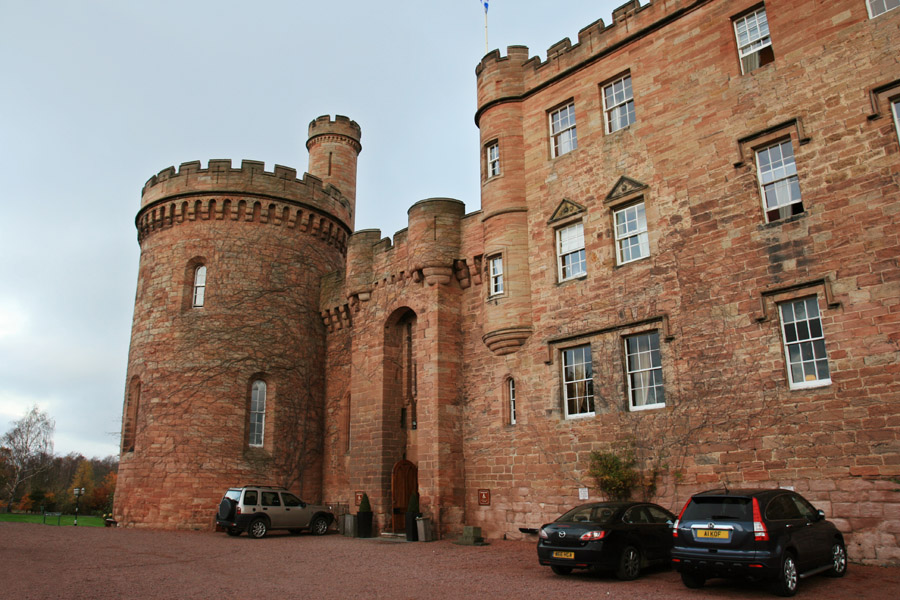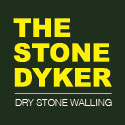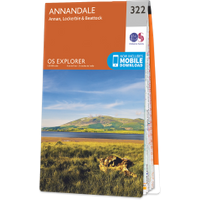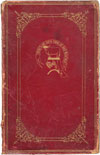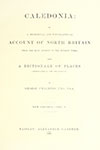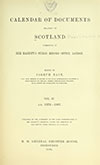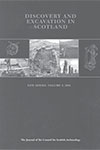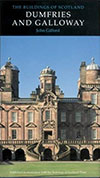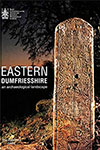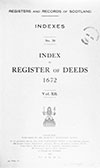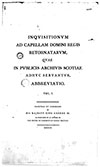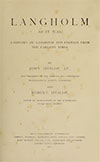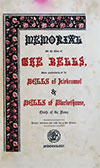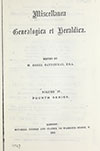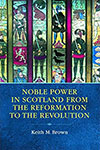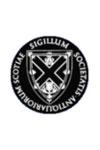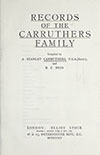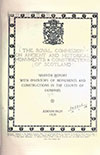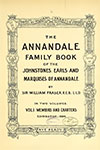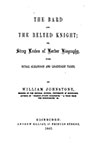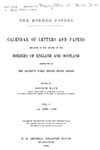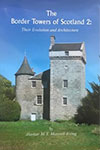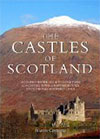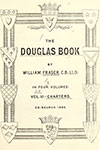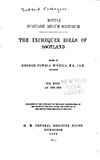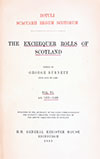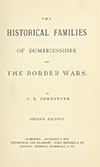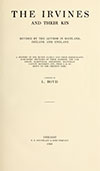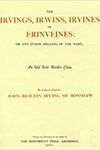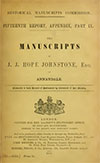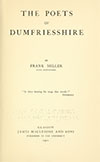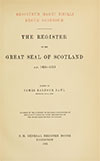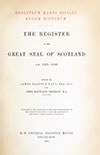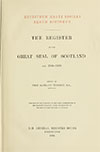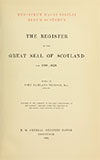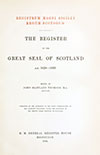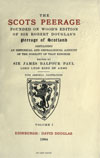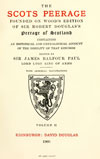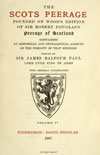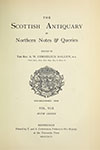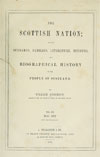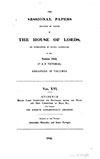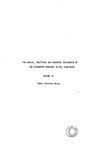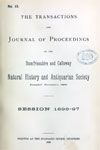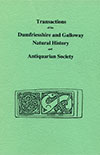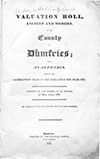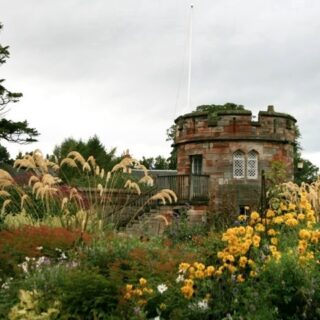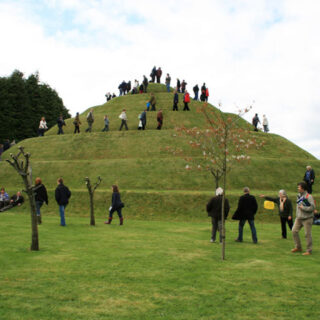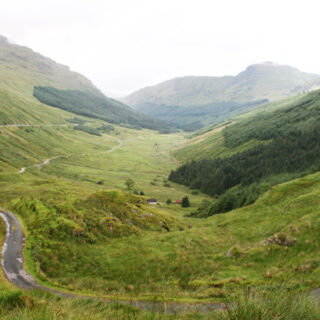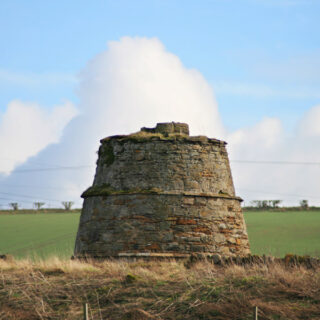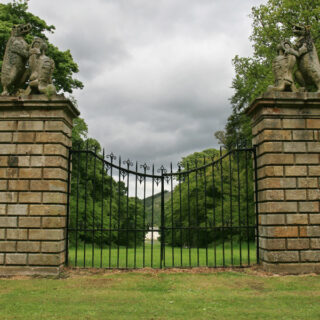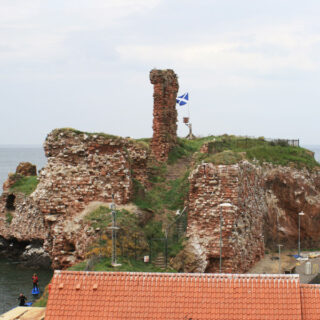,%20Dumfriesshire/IMG_7550.JPG)
Kirkconnel Tower
,%20Dumfriesshire/IMG_7550.JPG)
Kirkconnel Tower is a ruined 15th century tower house which was once of a substantial size.
The early history of the site doesn’t seem to be known in any great detail, although what is clear is that the land on which the tower stood wasn’t always known as Kirkconnel and was part of the lands of Ecclefechan. The lands of Ecclefechan seem to have been subdivided from an early period, with the tower standing on what was later known as the ten merk land of Ecclefechan pertaining to Kirkconnell. This may be the same land that was known as the ten pound land of Ecclefechan, sometimes referred to as the land of old extent.
When the Bruce family were granted the lordship of Annandale in the 12th century they divided the area into smaller landholdings of which Ecclefechan was one. The Hoddom family may have been early owners of the lands of Ecclefechan, owning as they did the neighbouring lands of Hoddom and Tundergarth on either side of Ecclefechan, although this is supposition.
Adam de Carlyle, son of Robert de Hodelm and grandson of Odard de Hodelm, seems to have been granted an estate which included Luce to the south of Ecclefechan in the late 12th or early 13th century and was the progenitor of the Carlyle family.
In 1202 Pope Innocent III wrote to the priors of St. Oswald’s, Nostell and St. John’s, Pontefract, and Roger, rural dean of Ledsham regarding land at Eglefechan. In his letter he stated that W. de Midleton’s (possibly Middlebie) father had placed certain land of Ecclefechan in gage to Ivo de Crossebi in return for a certain sum of money. Ivo, when alive, and later his son, R. (probably Robert de Crossebi), had received a repayment of the loan but refused to return the land.
The land in question seem to have been that of Oulcottis or Woolcotes which was located close to the present farm of Orchard, to the north of the tower. Ivo de Crossebi may be Ivo de Kirkpatric who received the lands of “Thorbrec” and “Willambi” and the villa of “Blacwde” land in the feu of Pennersaughs, neighbouring Ecclefechan, from William de Brus, grandson of Robert de Brus, 1st Lord of Annandale, for his homage and service. The charter was witnessed by Robert de Crossebi and Gilbert de Jonistune amongst others.
In 1249 Sir Robert de Brus, 5th Lord of Annandale, was granted two carucates of land in the fee of Egilfechan by Robert de Dundovenald in a charter which was witnessed by Gilbert of Joneston and Humphrey of Kirkpatrick amongst others.
Ecclefechan is situated on a major route between Scotland and England and so was a site of strategic importance. Edward I of England visited Ecclefechan on the 5th of July 1300 on his way from Carlisle to Caerlaverock.
Margaret Brus, daughter of Robert de Brus, 6th Lord of Annandale, and sister of Robert the Bruce, married Sir William of Carlyle, and their son, also Sir William, later held the Mains of Kirkconnell which was apparently an alias of the Hall of Ecclefechan as the tower was once known. Whether his possession of Ecclefechan came from his mother or his father I have not been able to ascertain, but he seems to be the first mentioned Carlyle owner of the lands. Given that Adam de Carlyle held land to the south of Ecclefechan in the late 12th or early 13th century it’s possible that Ecclefechan was already in Carlyle ownership by the time of Sir William.
By the early 15th century the Lordship of Annandale had passed to the Douglas family, and perhaps with it some rights over Ecclefechan as in 1425 Archibald Douglas, 5th Earl of Douglas, granted various lands to John of Carruthers including Eglifechane.
It isn’t clear when the subdivision of Ecclefechan began but in 1456 John Maxwell was granted various lands including the fourteen shilling and four pence land of Egilfechane which was in the hands of the King following the death of Ade Moffat, and also the lands of Eglisfechane and Crosedikis. Maxwell received a confirmation of the grant of lands in the following year but granted sasine to Thomas Moffet, son of Ade Moffet, of the lands of Eggilfechane. It would seem that some of these references to the lands of Ecclefechan are actually in fact referring to subdivisions of those lands.
In 1486 Sir John Carlyle, Lord Carlyle of Torthorwald, resigned numerous lands, including Ecclefechan and Kirkconnel Tower in Kirkpatrick-Fleming, which were then united into his barony of Carlyle. The Carlyles of Torthorwald seem to have retained the superiority of Ecclefechan and granted the 10 pound lands of Ecclefechan to the Carruthers of Holmains by the end of the first quarter of the 15th century.
In 1506 Andrew Herries, 2nd Lord Herries of Terregles, infefted William Irving of Bonshaw in his three pound land of Ecclefechan, although where exactly this land was located I haven’t been able to ascertain. In the same year Edward Irving, son of the late William Irving of Bonshaw, received a charter from Robert Crosbie of Ulcotis of the lands of Hairgills, Ulcoates and others.
In 1507 James IV granted a charter to John Carruthers of various lands including the lands of Egilfeichane, and the King granted Lord Herries various lands including the five pound land of Eglisfechane in 1510. In 1525 James V granted various lands to John Carruthers de Holmendis and his wife, Blanche Murray, including the six merk land of Castelbank in Egilphecene. John Carruthers de Holmendis received a new grant of various lands from James V in 1542 including the ten pound land of Egilphechane of old extent.
Following the death of William Herries, 3rd Lord Herries of Terregles, in 1543 with no male issue his lands were divided between his three daughters, Agnes, Katherine and Janet.
On the 1st of February 1549 Agnes Herries and her husband, Sir John Maxwell, Master of Maxwell and second son of Robert Maxwell, 4th Lord Maxwell, were granted a crown charter by Mary, Queen of Scots, of a third part of the barony of Herries made up of various lands including the twenty pound land of Hoddom and the five pound land of Eglifechane. The twenty pound land consisted of all that belonged to Lord Herries in Hoddom apart from the ten pound land of Ecclefechan.
In May 1549 Agnes made over the charter to Richard Irving, known as Old Duke Richie, “for the good and faithful services done” to her and her husband, with him receiving the lands of Knockhill, Whitehill and Duke’s Close. On the 13th of June 1549 Agnes received from the Queen £10 from a third part of the land of Eglisfechane.
The Queen granted to John Hamilton, third son of James, Duke of Châtellerault and 2nd Earl of Arran, the third part of the barony of Herries, made up of various lands including the five pound land of old extent of Eglisthechane, which Katherine Herries had resigned to him, on the 3rd of February 1550. The Hamiltons had provided the dowry for Katherine’s marriage to Alexander Stewart of Garlies. On the 2nd of May 1550 the Queen granted Katherine ten pounds sixteen shillings and eight pence a the third part of the land of Eglisfechane.
By 1550 the Carlyles’ Ecclefechan lands had been broken up and granted to a variety of others, including the aforementioned three pound land transferred from Lord Herries to Irving of Bonshaw and another three pound land which had gone to Kirkpatrick of Knox. On the 30th of October 1550 Katherine received sixteen shillings and eight pence from the third part of the land of Eglisfechane from the Queen, and on the 12th of May 1551 Janet received fourteen pounds three shillings and four pence
The Irving family are said to have built the tower here in the 16th century and they were certainly prominent in the area at that time. William Irving was in possession of the lands of Woolcotes, Middlebie and other lands in Hoddom parish by the mid-16th century, receiving a sasine of them in 1551.
This William is sometimes designated William Irving of Kirkconnel, a tower in Kirkpatrick-Fleming parish around 5.0km to the east. That tower was owned by the Bells until it was forfeited in the 15th century with conflicting reports as to whether it was the Maxwells or the Irvings who subsequently took possession of it. This subject will be returned to later.
In 1556 William Irving of Bonshaw possessed the forty shilling land in Ecclefechan of which Carruthers of Holmains held the superiority.
The tower is situated in a good defensive position on raised ground to the east of a burn which flows through a steep-sided gorge into the Ecclefechan Burn. Rectangular in plan, it is aligned approximately east to west and measured around 11.6m in length although its width isn’t known. The walls were some 2.0m thick and it was constructed from coursed rubble of a substantial size. Around the base of the tower was a 0.15m wide plinth with a chamfered offset.
,%20Dumfriesshire/IMG_7551.JPG)
Immediately above the plinth in the middle of the north wall was a wide-mouthed splayed gunloop of a type that became commonplace in the mid-16th century, more typically in the north-east of Scotland.
,%20Dumfriesshire/IMG_7552.JPG)
The ground floor of the tower was vaulted, with springs for the vaults still discernible in places. On the first floor there was a a recess on the wall which probably represents a fireplace that was later robbed of its dressings.
,%20Dumfriesshire/IMG_7558.JPG)
Possible earthworks have been identified in the vicinity of the tower, with ditches to its south and a bank against the burn.
In 1561 Katherine Herries revealed that she had been coerced into signing away her third of the barony of Herries and resigned it to Sir John Maxwell and Agnes Herries. In the same year Sir John and Agnes received a charter from the aforementioned John Hamilton, by now Commendator of Arbroath, of various lands including the five pound land of old extent of Egilfechane.
Elizabeth I of England sent a force under Lord Scrope into Dumfriesshire in 1570 to destroy the houses of those who had supported her cousin, Mary. The town of Ecclefechan was burned and the estates of Lord Herries, Lord Maxwell and Murray of Cockpool were singled out for special treatment, they having been deemed to be particularly sympathetic to Mary. Whether or not the tower suffered the same fate is unclear.
,%20Dumfriesshire/IMG_7553.JPG)
On the 15th of July 1571 James VI confirmed a charter by the Commendator of Arbroath to Margaret Seton, daughter of George, Lord Seton, of various lands including two parts of the five pound pound land of old extent of Egilfechane.
William Irving of Kirkconnel, in Kirkpatrick-Fleming, is on record in 1582, and again in 1583 as Will Urwen of Kyrkconill. He was the second son of Edward Irving of Bonshaw, who held the 3 pound land of Ecclefechan.
In 1585 the Irvings and Johnstones were involved in a feud with the Maxwells, probably started by the Maxwells raiding Johnstone lands (they burned Lochwood Tower in that year). John Maxwell, 8th Lord Maxwell and briefly the Earl of Morton, attempted to recover from the Irvings the “stone house” of Kirkconnel which had previously belonged to the Maxwells. William Irving held out however and Maxwell retreated, going on to attack the two “stone houses” of the Johnstones in Lockerbie (presumably Lockerbie Tower and Netherplace).
The feud rumbled on a for a number of years but wasn’t an isolated case. Towards the end of the 16th century the Irvings of lower Kirtledale were in a conflict with the Bells of upper Kirtledale. It’s possible that this may have been in regard to the shooting of Fair Helen of Kirkconnel.
Helen was said to have been the daughter of the laird of Kirkconnel and had two suitors. One is said to have been Adam Fleming of Fleming Hall while his rival may have been Robert Bell of Blackethouse. An attempt was made on Fleming’s life but Helen intervened and was shot instead. Over the years the details of the story have become confused and the surnames of the three characters are interchangeable between versions.
In 1587 Alexander Carlile of Eglisfechan was included in a list of “chief men of name, not being lairds” residing in Dumfriesshire and the Stewartry of Kirkcudbright, suggesting that the Carlyles still held some rights over the lands of Ecclefechan. There is no mention of Kirkconnel in that list or the extended list of lairds and gentlemen.
The feud with the Maxwells came to a head in December 1593 when the Irvings and Johnstones, led by Sir James Johnstone of Dunskellie, met the Maxwells at Dryfe Sands and inflicted a decisive defeat on the Maxwells, with the 8th Lord Maxwell dying in battle. Edward Irving of Bonshaw may also have died in the fight.
Edward Irving of Bonshaw, presumably a younger relative, William Irving of Kirkconnell and William’s son are included in a list of allies of Sir James Johnstone of Dunskellie in 1597 whom Sir James Douglas of Drumlanrig and his allies promised not to attack.
In 1608 Margaret Moffet, heiress of Thomas Moffet of Knock, was granted various lands including the three and a half merk lands of Egilfechane of old extent.
The Irvings are said to have sold their estate of Kirkconnel in Kirkpatrick-Fleming to Sir John Maxwell in 1609 and moved to the Hall of Ecclefechan, which confusingly they then renamed Kirkconnel. Which Maxwell this was is unclear. John Maxwell, 9th Lord Maxwell, shot and killed Sir James Johnstone of Dunskellie in 1608 and was forfeited in 1609 as a result. Another source suggests that the Irvings were deprived of Kirkconnel by a Robert, Lord Maxwell, in 1600, however Robert Maxwell didn’t become the 10th Lord Maxwell until 1613.
On the 17th of February 1609 James VI granted to James Johnstone of Johnstone various lands including the three and a half merk land of Eggilfechane of old extent which Margaret Moffet, daughter and heir of Thomas Moffet de Knok, resigned in his favour. The King then granted various lands including Eglefecheaine to John Murray of Rainpatrik which were incorporated into the free barony of Lochmaben on the 1st of July 1612, confirming the free barony of Lochmaben to John Murray of Dundrenane on the 30th of October.
In the same year William Irving of Kirkconnell witnessed a grant by “Dame Elizabeth Lady of Carlile” to James Johnstone of Wastraw of the five merk lands of Stank in Dornock parish.
George Carruthers of Denbie obtained letters of inhibition against his brother, John Carruthers of Holmains, in 1618 preventing him from disponing or intromitting with (transferring ownership of or dealing with) the 5 merk land of Eccelfechan, the 6/8 land of Raffles and the 6/8 lands of Howthat which he should have infefted George in.
In 1622 the feud between the Irvings and the Maxwells seems to have flared up again, although the exact circumstances are unclear. One source suggests that Robert Maxwell, 1st Earl of Nithsdale, sent his younger brother, James Maxwell, to besiege Kirkconnel which he laid claim to, suggesting that it was in fact the Kirkconnel Tower in Kirkpatrick-Fleming. William Irving of Kirkconnel complained to the Lords Council on the 25th of January that James Maxwell and others had entered Kirkconnel armed with swords and pistols intending to kill him.
Another source states that it was John Maxwell, son of Robert Maxwell of Castlemilk, who led a band of Maxwells who attacked the Ecclefechan Kirkconnel and was later fined for wearing pistols and breaking into the house.
Transactions regarding the subdivided lands of Ecclefechan continued and on the 20th of January 1625 James VI granted to Walter Whiteford, minister of Failford in Ayrshire, various lands including the five pound land of Egilfechane. On the 13th of July in the same year Charles I granted to John Murray, 1st Earl of Annandale, various lands including those of Egleschecchaine.
On the 1st of April 1629 the King granted to John Aldinstoun, son of Thomas Aldinstoun, merchant burgess of Edinburgh, various lands including those of Egilfechin. These lands were wadset to John Adinston, son of late Thomas Adinston, from John Maxwell, 6th Lord Herries of Terregles, for a debt owed of 17,000 merks owed by Herries to another Edinburgh merchant, David Mitchell. Herries had been in debt to the Adinstons since at least 1613.
Later in 1629 on the 24th of July Charles I granted to James Johnstoun various lands including the five pound land of Egglefechaine. Presumably this was the same five pound land as the five pound land of Egilfechin he then granted to Lord Richard Murray de Cockpuill on the 16th of February 1633. In 1641 James Murray, 2nd Earl of Annandale, received a charter of numerous lands including those of Egilfechane.
Many of these transactions seem not to have concerned Kirkconnel Tower, the former Hall of Ecclefechan, but are included here for completeness regarding the old lands of Ecclefechan. William Irving of Kirkconnel, who had married a daughter of Richard Bell, died in 1642 and was succeeded by their son, also William Irving of Kirkconnel., who married Jean Armstrong, sister of Lancelot Armstrong of Artine.
The tower isn’t shown on Blaeu’s mid-17th century map of Annandale, with only Eggilfechi Kirk marked in the vicinity.
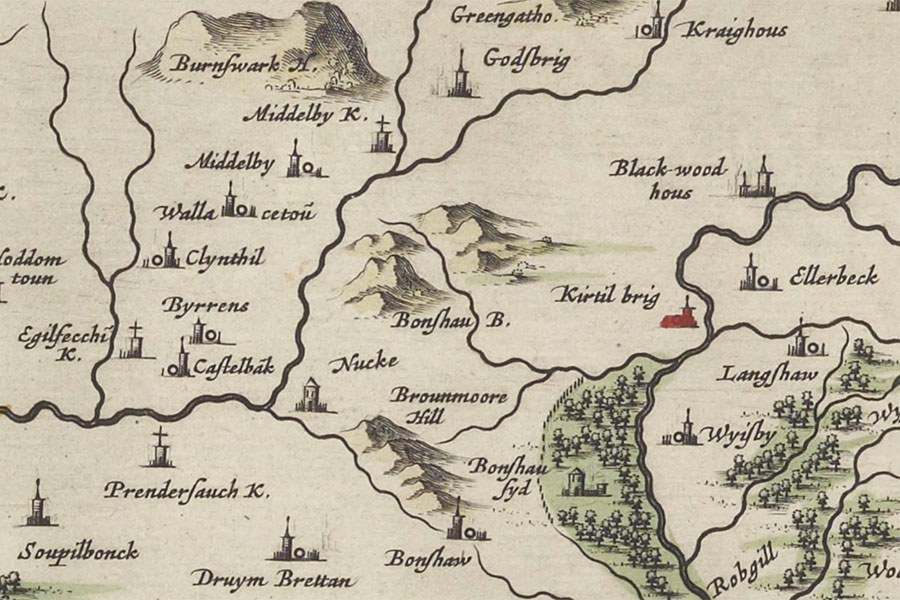
Joan Blaeu, Amsterdam, 1654map image courtesy of NLS
In 1655 James Irving of Bonshaw was served heir-special to his great-great-grandfather, Edward Irving of Bonshaw, in “the 3 pund land of old extent of Egilfechane”.
The “three merk half merk land of Egilfechan” was included in a long list of possessions granted to James Johnstone, 1st Earl of Annandale and Hartfell, in 1662 presumably the same three and a half merk land that his father had obtained from the Moffets.
In 1666 George Carruthers, youngest son of the late George Carruthers of Denbie, disposed of the 40 shilling lands of Denbie, the 5 merk land of Ecclefechan “possest by William Irving elder and younger”, the half merk land of Raffles and the half merk lands of Howthat to the 1st Earl of Annandale. The Earl’s factor and Chamberlain was James Carruthers of the family of Holmains. In 1669 the Earl of Annandale, received a charter from Charles II confirming numerous lands including “the three merk and half merk land of Ecclefechan”.
The lands consisting of “The Ten merkland pertaining to Kirkconnell, The half merkland of the half merkland of Blackwoods in Middlebie included” were valued at 400 merks in the valuation rolls of 1671 while “The merkland of Ecclefechan, and the Fourtie shilling land of Burnswark and Burnswarkley”, valued at 450 merks.
A register of deeds from 1672 shows Harbert or Herbert, John and Robert Irving, all sons of William Irving, and William Irving the elder resident in Eglefechane, and James Irving resident in Ekillfeuchen, and William Irving of Kirkconnell is on record in a register of deeds from 1673. Around this time Francis Herries of Hartwood seems to have acquired the ten pound land of Ecclefechan.
William Irving of Kirkconnel died in 1680 and was succeeded by his son, another William, who had married Isabel or Isobel Irving or Irvine in 1654. In 1680 John Carruthers of Holmains granted a tack of a £5 land of his £10 land of Ecclefechan to the younger William including the clause “perpetually and continually as long as the grass groweth up and the water runneth down”.
William and Isobel had six children before her death in 1684, but their only son died while young. William married secondly Margaret Carruthers, daughter of John Carruthers of Holmains, and had a daughter. In 1691 William Irvine of Kirkconnel is listed in the hearth tax report for Dumfriesshire as having three hearths and as being the landowner of various properties including Langdick, Houdails, Clinthill, Clintsyde, Oullcoatts and Ecklesfechen.
James Carruthers of Over Halleaths, second son of William Carruthers of Butterquhat, had a sasine of an annual rent of £180 from the lands of Woolcoats and Ecclefechan from William Bell of Scotsbrig in 1697.
In 1699 George Carruthers, son of the late John Carruthers of Holmains, received a charter from William II of various lands that had been owned by his father, including “all and haill the ten pound land of Ecclefechan of old extent”, which was incorporated into the barony of Holmains.
William Irving of Kirkconnel died in 1706 and since he had no surviving sons he was succeeded by his brother, Herbert Irving of Woolcotts, who died in 1709, leaving his wife, Janet, and their daughter, Sarah.
William Herries, son and heir of Francis Herries of Hartwood, sold Ecclefechan, presumably the ten pound land of Ecclefechan, to George Carruthers of Holmains in 1710. In 1715 George attempted to terminate the tack his father had made to William Irving due to it not having an expiry date however the Court ruled that his father’s intention had been to grant a perpetual right to Irving and his successors and so dismissed the case.
Sarah Irving married William Knox and in 1718 they sold various lands that her uncle, William Irving of Kirkconnel, had owned to James Douglas of Dornock however they retained Kirkconnel.
A new house seems to have been built, or an older house remodelled, in the first half of the 18th century as built into a later neighbouring property, referred to in 1898 as “the old Dwelling House” adjoining the tower, were three stones carved with dates and initials. One, upside down over a window, was carved with “JJ. WK. SJ. 1724.”. A second, also upside down over a window, was carved with “WK. SI. 1738.” The third, over a doorway, was carved with “MDCC. WK. SJ. XXXV.” (1735). JJ would seem in fact to be JI for Janet Irving, Sarah’s mother, WK would be for William Knox, Sarah’s husband, and SJ would be SI for Sarah Irving herself.
The tower is not shown on Moll’s maps from the first half of the 18th century, with only the church of Eggilfechi again marked in the vicinity, however Kirkconnell is marked as a house within formal gardens on Roy’s mid-18th century map.
Sarah and William’s daughter, Janet Knox, married George Arnott in 1754 in an irregular marriage, that is to say not before a minister. They had five sons and two daughters, the most notable of whom was their fifth son, Archibald Arnott, who was born at what was by then known as Kirkconnel Hall in 1772. Archibald later qualified as a doctor and joined the army, serving with the 11th Dragoons and then from 1799 with the 20th Regiment of Foot. While away from home his mother is said to have sold off some of the stones from the old tower.
In 1777 a John Irving died unmarried and bequeathed in liferent to his sisters, Agnes, Mary and Philadelphia Irving, his estate of Whitehill along with various debts that were owed to him. One of these debts was due to him by Janet Knox of Kirkconnell.
Janet Knox died in 1796 but her extended Arnott family continued to reside at Kirkconnel Hall. George Arnott died in 1801. Early in the 19th century the property is marked on maps simply as Hall.
Sir Robert Herries, son of William Herries of Halldykes and Member of Parliament for Dumfries Burghs between 1780 and 1784, seems to have bought the superiority of Ecclefechan but sold it some time before he made a will in 1803 (he died in 1815).
In 1819 the 20th Foot was sent to St. Helena to form the garrison on the island and in 1821 Dr. Arnott was asked to treat Napoleon Bonaparte whom had dismissed numerous doctors previously. Napoleon took a liking to Dr. Arnott and two days before his death gave instructions that Arnott was the only doctor to touch him should he lose his faculties. Dr. Arnott returned home to Scotland in 1826 due to ill health, resigned from the army later that year and made his home at Kirkconnel Hall.
By 1827 the old lands of Ecclefechan seem to have been subdivided into around 34 smaller holdings. Dr. Arnott owned or occupied the “Hall of Ecclefechan, part of Kirkconnel”, valued at 64 merks, and two other parts of Kirkconnel worth 16 merks and 4 merks.
Walter Francis Montagu Douglas Scott, 5th Duke of Buccleuch and 7th Duke of Queensberry, owned “Part of Ten-merkland of Kirkconnel” valued at 5 merks. The trustees of Sir George Frederick Johnstone of Westerhall, Bt., and William Graham owned the “Merkland of Ecclefechan, Forty-shillingland of Burnswark and Burnswarklees” valued at 450 merks. The heirs of James Miller of Castlebank owned “Part of Kirkconnel” valued at 12 merks. Robert Carlyle of Langdyke owned “Part of Ten-merkland of Kirkconnel called Myre” valued at 30 merks. John Graham owned “Part of Kirkconnel, called Graham’s Hall” valued at 50 merks.
Dr. Arnott is said to have bought Kirkconnel Hall from his brother and sister upon the death of his uncle although I haven’t been able to ascertain if this was the case. Similarly Kirkconnel Hall is said to have been built in 1838 however it is more likely that an existing building, built some time after the old tower fell out of use, was remodelled and extended at this time.
In 1855 Dr. Archibald Arnott died at Kirkconnel Hall having never married and having no children. He left Kirkconnel Hall to Dr. Francis Shortt Arnott, son of his elder brother, John Arnott and Catherine Shortt, all of whom had lived with Dr. Arnott. Like his uncle, Francis qualified as a doctor and joined the army, reaching the rank of Surgeon-Major. Kirkconnel Hall was listed as being owned and occupied by Dr F S Arnott M D in the 1850s although he seems to have been serving abroad.
The younger Dr. Arnott retired from the army in 1869 and returned to Kirkconnel Hall where he died in 1879, He was succeeded by his son, Archibald Arnott of Hall of Kirkconnell. In 1883 Archibald’s uncle, George, a younger brother of Francis, died at Kirkconnel Hall. George’s wife, Jane Jones, died at Kirkconnel Hall in 1885.
In 1898 the entire 11.6m length of the north wall was still standing along with substantial sections of the east and west walls, measuring 4.9m and 4.0m respectively. At this time it was till possible to see the remains of the spiral staircase in the north-east corner, and a 0.15m plinth at the base of the north wall which was 0.9m above the ground level on the outside but much closer to the ground on the inside due to differences in the level of the lawn.
Today around 10.7m of the north wall remains standing to a height of around 3.0m, along with a section of the north-west wall which projects south to a length of around 5.1m.
The property was sold several times after the Arnotts, most recently in 2006, and is now run as the Kirkconnel Hall Hotel.
Alternative names for Kirkconnel Tower
Achilfechan; Ackollfegell; Ecclefechan Hall; Ecklesfechen; Eggilfechan; Egglefechaine; Egglesfechan; Egilfechan; Egilfechane; Egilfechin; Egilfeichane; Egilphecene; Egilphechane; Eglefechan; Eglefechane; Eglefcheaine; Eglefecheaine; Egleschechaine; Eglesfeghan; Eglifechane; Eglisfechan; Eglisfechane; Eglisphechane; Eglisthechane; Ekillfeuchen; Hall; Hall of Ecclefechan; Hall of Kirkconnell; Kirkconnal; Kirkconnel Hall; Kirkconnell; Kirkconnell Hall; Mains of Kirkconnel; Mains of Kirkconnell; New Kirkconnell; The Ha'; The Old Hall of Ecclefechan
